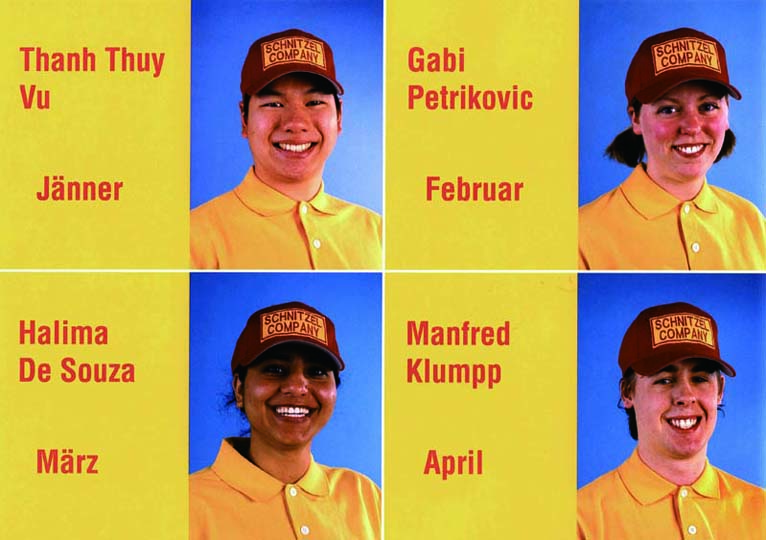ONE SUITCASE PER PERSON
| May 24, 2012 | Post In LEAP 14

In 1949, as he was boarding a plane to leave China, David Diao saw a sign that read “One suitcase per person.” He later made a painting bearing those words, which provide the inspiration for the title of this exhibition. The simple phrase evokes travel, baggage and the individual. It is the starting point for curator Davina Lee to further her investigations into contemporary art by members of the Chinese diaspora. Lee curated a 2009 Hong Kong exhibition of British artist Dinu Li’s “Mother of All Journeys,” first commissioned by London’s Victoria & Albert Museum, which focused on family history, telling a story of memory and emigration. “One Suitcase Per Person” features Diao, Ken Lum and Hiram To, artists of Chinese descent of different generations. All three cemented their artistic practice while overseas, and their work touches on the personal and the political.
“Fortune Landscapes” (2011) by Hiram To, who resides in Hong Kong but first established his career in Australia, superimposes images of ikebana patterns taken from his mother’s collection upon stills from the 1955 film Soldier of Fortune. Though Soldier of Fortune, starring Clark Gable and Susan Hayward, has been largely forgotten, it bears the distinction of being the first Hollywood movie to be shot in Hong Kong. The colorful ikebana patterns temper the foreign gaze of the stills, producing a distinctive reading of the 1950s Hong Kong landscape. In contrast, Causal Victim (1990) is a black-and-white photograph of the artist standing by Barker Road Station on the Peak Tram line, a location used in the film. In both works, To examines personal history and his relationship to both Hong Kong and the world through the lens of pop culture, a tactic he often uses in his artistic practice.
Canadian artist Ken Lum’s “Schnitzel Company” (2004) first appeared in billboard form in Vienna. It is a play on employee of the month displays, and connects to his previous work with portraiture and advertising rhetoric. The first piece in the series contains the line “Great Schnitzel! Great Company!” illuminating the unimaginative nature of corporate culture. Though the images shown in the exhibition are smaller than the original billboards, they are still far larger than regular employee of the month displays, forcing the viewer to consider the people who are depicted as model workers. Each photograph is accompanied by the name of the employee and the month of their award. Cultural signifiers such as clothing or hairstyle are stripped away, replaced with a uniform: a burgundy hat and a bright yellow polo shirt. It is difficult to see each person beyond his or her identity as an employee working a menial job— such is the dehumanizing nature of massive corporations.
New York-based Diao, who had his first New York solo exhibition in 1969, is best known for his abstract modernist paintings. The series “Da Hen Li House” is his most personal work and as a group, these paintings form a narrative about his childhood home, somewhat a departure from his established art practice. Two acrylic and vinyl on canvas paintings, one in English and one in Chinese, both named I Lived There Until I Was Six (2008), start the story, stating that there were no photographs of the house and that by the time he returned to Chengdu, the house had been demolished. Text, architectural drawings and simple images are the basis of many of the rest of the paintings, and function as an excavation of memory. This series is both a genesis story and a history of the artist, and an apt exemplification of the broader expositions of “One Suitcase Per Person”: the passage of time, the refinement of craft, and the expansion of the identity of the Chinese diaspora. Doretta Lau

